Canada’s sesquicentennial: 1867-2017
‘On the 1st of July 1867, as soon as the clocks told midnight, in most of the towns and villages from the Atlantic shores of Nova Scotia to the north-west confines of Lake Superior, a stretch of 2000 miles or more, the anthem ‘God save the Queen’ was… sounded to announce the day.’
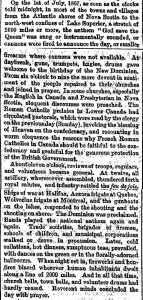 A correspondent witnessed the events heralding the start of Canadian Confederation and sent his report back home. Liverpool Mercury Thursday 15 August 1867 See our online newspaper archive Gale News Vault
A correspondent witnessed the events heralding the start of Canadian Confederation and sent his report back home. Liverpool Mercury Thursday 15 August 1867 See our online newspaper archive Gale News Vault
The union of the colonies of Canada (formerly Upper and Lower Canada), Nova Scotia and New Brunswick into the Dominion of Canada came to pass on the 1 July, 1867 – 150 years ago this year. Creation of the nation from the separate colonies was enabled by the passing of The British North America Act 1867 which established the Canadian constitution with the ‘Declaration of Union’ (section 3).
‘It shall be lawful for the Queen, by and with the advice of Her Majesty’s Most Honourable Privy Council, to declare by proclamation that, on and after a day therein appointed, not being more than six months after the passing of this Act, the provinces of Canada, Nova Scotia, and New Brunswick shall form and be one dominion under the name of Canada; and on and after that day those three provinces shall form and be one dominion under that name accordingly.’ British North America Act 1867 Legislation.co.uk
Despite the fulsome tone of the article above, the rejoicing was certainly not universal; elections for the new House of Commons and the Provincial Assembly held later in 1867 in Nova Scotia were crushing defeats for the confederate supporters.
Reasons for Confederation
The reasons driving the move towards confederation were many. From the British viewpoint the cost of governing and protecting the colonies was questioned by many and the idea of a friendly but self-sufficient Dominion of Canada became popular.
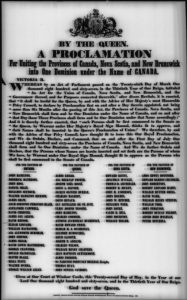
Political Tensions in The United Province of Canada were another driving force. The Province of Canada was created by the 1840 Act of Union which merged Upper Canada and Lower Canada; colonies which had previously had separate parliaments. This led to an ongoing political stalemate between the largely French speaking Lower Canada to the East and the rapidly growing, English speaking Upper Canada to the West. Each had been given equal representation in their “unified” government and they could not, or would not, agree on anything. The prospect of a federal union including separate provincial status for Ontario and Quebec gained favour in this difficult climate.
The American repeal of the Canadian-American Reciprocity Treaty (a free trade treaty) in 1865 further fuelled the movement towards confederation. Without free trade to the south the British colonies looked to trade amongst themselves for future prosperity.
In the wake of the American Civil War the United States were seen as harbouring expansionist ambitions and the vast area from Canada West (modern day Ontario) to the Pacific Ocean was perceived to be in their sights. The Alaska Purchase in February 1867 only heightened this concern.
Fathers of Confederation
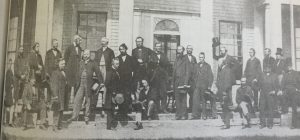
Canada can fairly be described as ‘A Nation By Consent’ as the process of its creation was brought about through discussion and negotiation. The Fathers of Confederation, as they are called in Canada, are the 36 politicians who attended one or more of three conferences which drafted and negotiated the terms of Confederation. The conferences were the Charlottetown Conference (Prince Edward Island) in September 1864, the Quebec Conference (Canada East) in October 1864 and the London Conference (England) in December 1866. Other individuals, in particular the politicians who brought the remaining provinces into the Nation, are sometimes added to this group. One of the leading Fathers of Confederation, Sir John A. MacDonald, became Canada’s first Prime Minister.
The Provinces 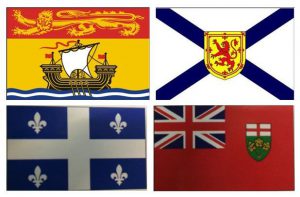
The three colonies that joined the Confederation were Canada (which was divided into Ontario and Quebec), New Brunswick and Nova Scotia and these became the new country’s four initial provinces. Further provinces joined in subsequent years to form Canada as we know it now.
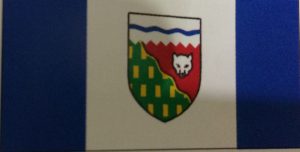 North West Territories 1870
North West Territories 1870
Shortly after confederation, an act of parliament, The Rupert’s Land Act 1868, authorised the purchase of Rupert’s Land from the Hudson’s Bay Company who had traded in and administered this area since 1670. In 1870 this vast territory, which included the whole of Manitoba, most of Saskatchewan and parts of Alberta, Ontario, Quebec and Nunavut was added to the Dominion of Canada. This remains the largest land purchase in Canada’s history. The entire parcel of western and Arctic lands became the Northwest Territories – although Manitoba was almost immediately given provincial status in its own right.
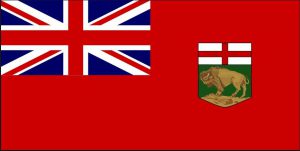 Manitoba 1870
Manitoba 1870
In 1870 Manitoba was carved out of the Northwest Territories to become the 5th province in Confederation. The influential Métis politician Louis Riel is largely responsible for this as he led the Red River Rebellion and created a provisional government in Manitoba whose aims included the provision of separate French schools for Métis children and protection for the practice of Catholicism. Many of these demands were incorporated into the Manitoba Act which established the new province but, unfortunately for Riel, amnesty for acts that occurred during the rebellion was not included. In 1875, Riel was formally exiled from Canada for five years despite the protests of Quebec, where there was general sympathy for his French and Catholic agenda. Riel was elected to the Canadian parliament three times while in exile, but never took his seat. He returned to Canada in 1885 to lead a Métis rebellion in Saskatchewan. This time his actions were a failure and he was captured, convicted of high treason and executed – becoming a hero and martyr to Catholic French Canada and widening the cultural divisions which which remain an issue in Canada even now.
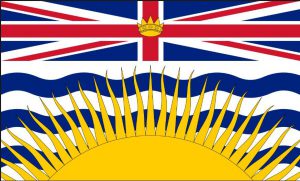 British Columbia 1871
British Columbia 1871
When British Columbia joined Confederation it was geographically remote and had better communication links with the United States than with the rest of Canada. This pacific colony was large and resource-rich but sparsely populated and in debt. There was a faction that preferred the option of joining with the United States which was a key trading partner and close neighbour, however with an important British naval base at Esquimalt and strong historic ties to Britain many were opposed to breaking the colonial link. Some argued that British Columbia was too far from the rest of Canada to become a viable part of the Dominion however in 1871 a delegation was sent to Ottawa with a list of demands and received a surprisingly positive response. After negotiation with the government of Canada, the delegates’ agenda was accepted in its entirety including financial settlements, generous representation in parliament (more than their share based on representation by population), and a stunning promise to build a transcontinental railway line through the Rocky Mountains to join British Columbia to the rest of the country within ten years. This transcontinental railway, although vastly expensive and controversial, turned out to be a visionary endeavour; one of the strongest links binding the fledgling Dominion together, linking it from sea to sea as a nation. In July 1871 British Columbia became the 6th province of Canada.
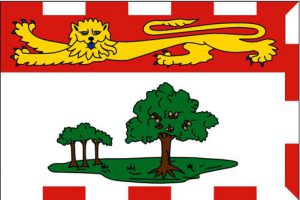 Prince Edward Island 1873
Prince Edward Island 1873
It was not until 6 years after the first Confederation conference was held in Charlottetown, PEI, that Prince Edward Island became a province of Canada. Despite being a part of the initial negotiations, PEI decided the terms of joining were not beneficial and chose to remain a colony of Britain. In 1871, frustrated with colonial administration and having run into debt, it entertained overtures from the United States. The Canadian government opened their own negotiations in 1873 and persuaded Prince Edward Island to join Canada; taking over the province’s debts and offering other financial compensations. PEI became the 7th province on July 1, 1873.
As a result of having hosted the inaugural meeting of Confederation, the Charlottetown Conference, Prince Edward Island is often called the “Birthplace of Confederation”
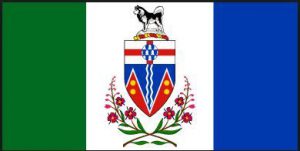 The Yukon Territory 1898
The Yukon Territory 1898
In 1896 Gold was discovered on a tributary of the Klondike River and soon thousands of people from across the continent flocked to the Klondike Gold Rush. The United States had purchased Alaska in 1867, and the number of Americans flooding across the border into the Klondike in the 1890s created fears in Canada that the United States would attempt to annex this valuable land. These fears, along with the surge in population caused by the gold rush, forced the Canadian government to increase the size of the force of North-West Mounted Police in the area in order to assert their claim to the region and prevent the sort of lawlessness which characterised the Alaskan gold rush across the border. The Northwest Territories had been divided into four districts in 1895, Yukon, Mackenzie, Franklin and Ungava, with the capital located far to the south in Regina. The burgeoning region of the Yukon, flush with people and money, wanted more local control over their district however, and on 13 June 1898, the Yukon Territory Act created Yukon as a separate Canadian territory with Dawson City the capital. After the gold rush ended many of the settlers left the Yukon and the capital was eventually moved to Whitehorse.
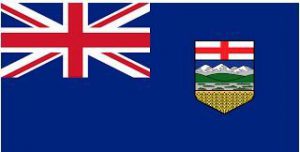
 Alberta and Saskatchewan 1905
Alberta and Saskatchewan 1905
As a part of the huge Northwest Territory, the regions now called Alberta and Saskatchewan were nominally governed locally from the territorial capital of Regina (in Saskatchewan) but in reality the federal government in Ottawa wielded political power over the area. From about 1900 local leaders were ambitious to achieve provincial status and take control of their own government. The federal government supplied North West Mounted Police to police the region with forts situated across the prairies. The federal government also negotiated land treaties with the indigenous peoples and promoted immigration to the area. The railway reached Calgary (in Alberta) by 1883 and the population of European settlers rose steeply in the 1890s.
Initially negotiations were to create a single huge western province however it soon became clear that it would be to large to govern and the region was split in two with the Provinces of Saskatchewan and Alberta becoming Canada’s 8th and 9th provinces in September 1905.
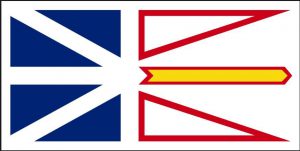 Newfoundland and Labrador 1949
Newfoundland and Labrador 1949
Newfoundland was a self-governing British colony from 1855 and a dominion from 1907 until 1949. St Johns, the capital, is the oldest city in Canada. As an independent, self-governing nation it existed alongside Canada and had no wish to become a part of the larger country. Unfortunately Newfoundland experienced a financial crisis in 1932 because of debts incurred through railway-building, participation in the Great War and the depression of the 1930s. In 1934, Newfoundland became the only dominion ever to give up its self-governing status and return to colonial administration under the British government. After the second world war ended Newfoundland had to make a choice; remain under the administration of the British Commission, regain their independence or become a part of Canada. With both Britain and Canada working in the background to promote the idea of joining Confederation, a plebiscite was held in June 1948, asking the population to choose between Confederation, self-government, and Commission rule. 85% of people voted against the Commission but the vote was split between Confederation and self-government. A run-off referendum was held in July between these two options and the Confederates won by a whisker, 52.34 percent to 47.66 percent. On 31 March 1949 Newfound and Labrador joined Canada as the 10th province. In the capital, St. John’s, which had voted 2-1 for self-government, some flags were flown at half-mast to mark the end of the line for an independent Newfoundland.
With the addition of the island of Newfoundland and the huge mainland area of Labrador, Canada became the world’s second largest nation.
 Nunavut 1999
Nunavut 1999
In 1999 the eastern part of the NWT became Nunavut, Canada’s 3rd territory. From about 1975 the Government of Canada entered into negotiations with representatives of the Inuit people to settle their land claims. The creation of a separate Inuit territory was proposed. In 1992 the people of the Northwest Territories were asked to vote in a plebiscite to determine the future, and popular backing for the proposed division was given. Two acts of parliament followed, the Nunavut Land Claims Agreement Act giving control of more than 135,000 square miles of territory to the Inuit and the Nunavut Act establishing the new territory and self-government. On April 1st 1999 Nunavut came into being.
The Flag: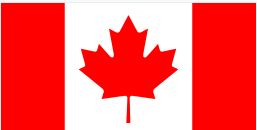
In 1965 Canada adopted the Maple Leaf Flag with broad bands of Red framing a central white square and a red maple leaf. This flag has become one of Canada’s most iconic symbols – instantly recognised around the globe.
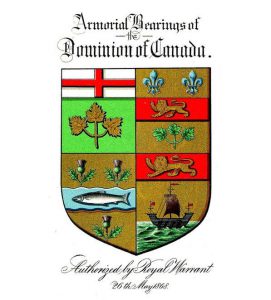
The maple leaf has been a symbol of Canada since long before confederation and was added to the British Red Ensign in many different guises during the colonial period. At the time of Confederation the Red Ensign bearing a crest containing symbols of the provinces was used alongside the Union Flag of Britain. As provinces joined Confederation more symbols were added to the crest until this design became unwieldy and was replaced by one bearing just the first four provinces. In 1921 red and white became the official colours of Canada; red from the cross of St. George and white from the French royal emblem. The Union Flag continued to be widely used in Canada until 1945 when the Red Ensign bearing the Arms of Canada was authorised to be used “until such time as Canada would adopt a national flag.” The maple leaf flag was chosen after a long period of sometimes acrimonious debate.
150 years on from Confederation in 1867, Canadians are celebrating their 150th birthday with a year of events planned for the capital, Ottawa, and across the Nation. Celebrations began at midnight 1 January 2017.
Sources:
Gale News Vault
The Canadian Encyclopedia
The Illustrated History of Canada
Legislation.co.uk
Historica Canada
Canadian Confederation – Wikipedia
World Encyclopedia of Flags
[Elaine McClelland, Library Assistant]
